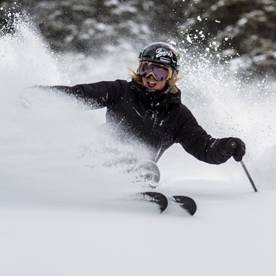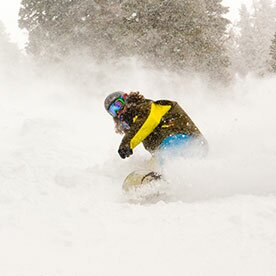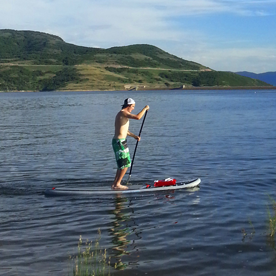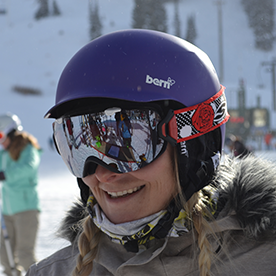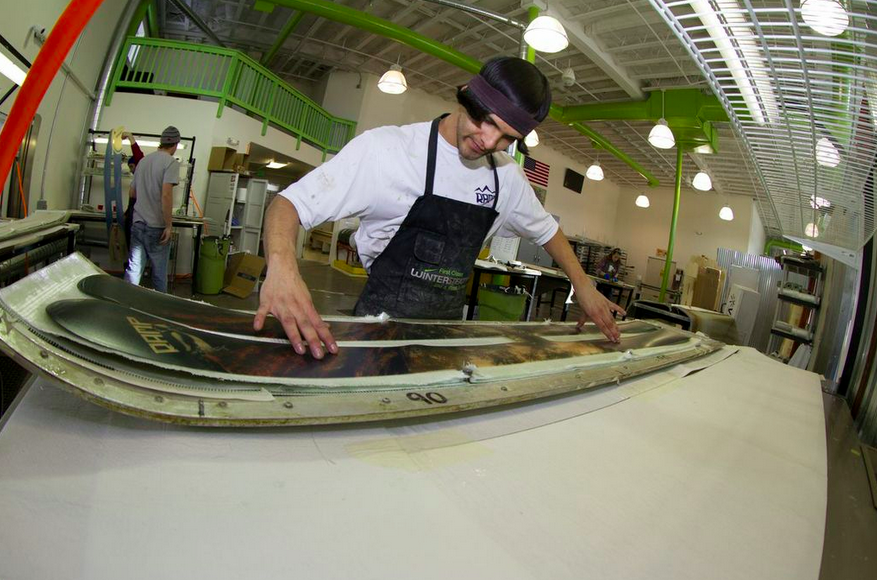
Hi friends of RAMP,
It's been a great spring at RAMP, all kinds of magazine tests, on-snow trade fairs, dealer ski days—lots of great stuff. The new skis and boards are riding so incredibly well. Our factory is really dialed now, producing at a really consistent high quality level. It's been so fun to get out in front of the ski and now the snowboard development so we can take advantage of the great process we've developed with all of its flexibility in design and shapes. I skied on many 15-16 concept skis and prototypes in April. Very exciting.
The first question I'll address is one I got at many dealer and consumer events this spring. I was asked often: "With a new factory, how well do your skis and snowboards hold up? Are they durable?"
This is obviously extremely important to us as durability and reliability are key components to being successful. When we started the company, and made our skis in Taiwan, we were about what I would call normal. The skis and boards were generally well made and in all models—except the Cork—we had what I would call normal reliability. The pipe and park crowd was trashing the Corks made in Taiwan. But that's not so abnormal either.
In May of 2012, we moved our production to the U.S. after two years of manufacturing in Taiwan. The skis and snowboards made in Park City have tremendous strength and durability. When we built the new factory we wanted skis and boards that rode well but also were superior in durability. We use a core that is four times as hard as the normal Poplar or Aspen industry standard. We use FSC Certified Bamboo, which is very expensive. One big reason we chose bamboo is that it is significantly harder to break compared to industry standard cores, or for rocks to make an impression from below. The bamboo sidewalls are also harder than the normal P-Tex or ABS sidewalls further protecting the edges from rock damage. We also use a full layer of Kevlar across the whole bottom of the ski that is flush/ level with the top of the edges. That ties the structure together and makes it even harder to penetrate. The bamboo and Kevlar provide a very lively solid ride, but more importantly they provide the toughest skis to break in the industry, we believe. In two seasons of producing skis we've had some issues in year one with top durability in the early going, but we haven't had a broken ski. I've been really impressed with just how tough these skis are. The vacuum molding contributes as well. You don't have to use such high pressure as you do in press molding so we retain more resin in the structure.

I mentioned above some top sheet issues. In the early production on skis we used a new graphic process which was beautiful. We developed a way to print the graphic on bamboo veneer instead of on the nylon top material. We could get good adhesion between the veneer and the top, and the underside of the veneer and the glass. What we found was that the veneer layer itself came apart in some of the skis. It seemed that the sublimation heat in only some cases caused the veneer backing to fail. So in our early production in the 12-13 season we replaced 108 U.S. made skis out of 900 units, nearly all from the above problem. Some skis would be perfect at end of season, some had veneer failure in one day. Virtually no broken skis though.
In 13-14 (our second year of U.S. production), we produced 1,300 skis and boards. We had three skis and two boards come back for replacement. Now that we have the top sheet issues corrected, we feel our skis and boards are amongst the most durable you can get.
Thanks for listening. Let me know your thoughts. Comment below or email me questions ([email protected]). Be back next week.
Mike Kilchenstein, CESnow

